March 18, 1911 – February 16, 1967
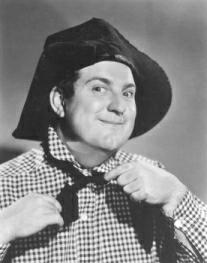
Singing Cowboy: Smiley Burnette was most famous for being Gene Autry’s sidekick and the character “Frog Millhouse”. He was a fine musician too and wrote some 300 songs. He later starred on “Petticoat Junction” as Charlie Pratt.
Smiley Burnette was born on March 18, 1911 in Summum, Illinois as Lester Alvin Burnett. His best creation was the character known as “Frog Millhouse” or just “Frog” , a character who wore a checkered shirt, tattered black Stetson cowboy hat with its brim turned up, and he rode a white horse with a black ringed eye (known first as “Black Eyed Nellie”, then “Ring Eyed Nellie”, and finally just “Ring Eye”. Interestingly, in real life, Smiley Burnette never owned a horse.
While Smiley was very young, his family moved to Monticello, near Urbana. They lived next to musicians with access to many instruments. Smiley borrowed one instrument after another. By the age of nine, he could play 10 instruments and by the age of 22, he had mastered about 50. In his lifetime, he would play more than 105 instruments, all of which he learned to play by ear; he never found the need to actually read music. The first instrument that Smiley learned to play was the piano but the first performance in which Smiley received payment was for playing the musical saw at the age of 9.
In the movies “Melody Trial”, “Waterfront Lady”, and “The Old Corral” Smiley played seven instruments simultaneously. He created and built some of the instruments in his workshop at his home. One of those instruments looked something like an organ with pipes, levers, and pull mechanisms. It was called a “Jassass-a-phone” and was featured in several movies the first being “The Singing Cowboy”. His very favorite instruments to play were the Piano Accordion and the Spanish Guitar.
Smiley dropped out of school due to financial needs and never finished the 9th grade. To help support his family, he tried his hand at a number of occupations including waiter, truck driver, taxi driver, carnival roustabout, delivery-boy, blacksmith, electrician, and photographer. He finally seemed to find his calling at a small local radio station, WDZ, in Tuscola, Illinois in 1929 where he ran all aspects of the radio station seven days a week. There, he worked as disc jockey, announcer, musical director, janitor, and all around entertainer. He would read the comics from the newspaper using multiple character voices and sound effects to entertain his young audience. He appropriated the name “Smiley” for a new children’s program he was creating after reading Mark Twain’s “Jumping Frog of Calaveras County”. His character became ‘Mr. Smiley’ and then, just “Smiley”.
In December 1933, Gene Autry was working in Chicago on WLS (World’s Largest Radio Station). He found himself without an accordion player and asked if anyone knew of a replacement. He was told of a young man down in Tuscola who played on the WDZ airwaves by the name of Smiley. Smiley joined Gene on the National Barn Dance radio show (WLS) in late December. The following year, Smiley and Gene headed west to appear in two Ken Maynard films. “In Old Santa Fe” was a feature length film in which Gene and Smiley provided the musical interlude, singing three songs back to back. Two of the songs were Smiley’s compositions, “Somewhere in Wyoming” and “Mama Don’t Allow No Music Played in Here”. The other film was a 15 chapter serial, “Mystery Mountain”. In the serial, the duo had only bit parts. Smiley was a wagon driver with one line, and Gene a ranch hand with a couple of lines. Upon completion of their film debut, Gene and Smiley headed back east to complete personnel appearances and return to radio broadcasting.
While on tour in Wisconsin two contract offers arrived for Gene and Smiley. The 10-year contracts were for them to star in pictures the first of which was the 12 chapter Mascot Master Serial, “The Phantom Empire”. Gene was to receive $5000 a day and Smiley was to receive $1000 a day. They packed up and headed west to California. It was on this drive that Smiley wrote the classic western ballet “Ridin’ Down the Canyon (When the Desert Sun Goes Down)”. In the next town they came to, the men had someone put it to music because neither Gene nor Smiley could read or write a note of music and they never did learn how. That song is currently in The United States Congressional Hall of Fame as being one of the top 10 most beautiful ballets and to this day holds that distinction.
In 1936, Smiley appeared in eight feature length films with Gene Autry, but also performed in two serials and three non-singing cowboy films. Gene and Smiley made a total of 64 films over their long film careers. In 1953 the last of their 6 movies were released.
The biggest event of 1936 was his meeting up with Miss Dallas MacDonnell, a newspaper columnist and writer, who was on assignment for Screen Magazine. They eloped on October 26th, 1936 and their marriage lasted for the rest of Smiley’s life, just over 30 years.
Smiley and Dallas purchased a rambling ranch home in the San Fernando Valley. It was close enough to the studio but still in the country. Smiley expanded the home, also building a recording studio next to the house. The couple adopted four children all from Tennessee: from oldest to youngest: Linda, Stephen, Carolyn, and Brian.
Smiley loved making personal appearances. Harmonica Bill Russell, known as the “World’s Most Famous Harmonica and Trick Harmonica Player”, often accompanied Smiley on tours in the 1940’s and 1950’s. Smiley also worked with Doye O’Dell who had formed a Cowboy Band known as “Doye O’Dell’s Radio Rangers”. Smiley and Doye, along with the Radio Rangers, got the chance to work together in the film for Columbia, “Whirlwind Raiders”, a Durango Kid film done in 1948. A very entertaining number called “Fiddling Fool”, is performed in the film by Smiley, Doye and the Rangers.
In 1942 Smiley was voted one of the top-ten moneymaking stars in the “Motion Picture Herald Fame Poll”. From that point he remained number three for many years thereafter. In 1953, as Western movies were on the decline, Smiley’s popularity remained high and he kept up with personal appearances, traveling all over the United States. He would do personal appearances at drive-ins, fairs, rodeos, trailer sales, furniture marts, and even on a salt block in a cow pasture. Smiley also did shows in the Town Square for the Chamber of Commerce of many towns, and in shopping centers which we now know as shopping malls.
Then in 1963, Smiley once again came before the camera but this time in the rural, folksy TV series “Petticoat Junction”. He now became known to a whole new generation of kids, young adults, and grown-ups as the Cannonball Engineer, “Charley Pratt”.
After finishing his scenes for the last show of the season, Smiley allowed himself to be taken to the hospital. One week later on February 16, 1967, Smiley died. Throughout his lifetime, Smiley never drank, smoked, or gambled, and he was married to the same woman for over 30 years. His wife Dallas passed away on February 19, 1976
Smiley’s original Hat and Shirt, donated by Smiley himself, were placed in the Cowboy Hall of Fame in Oklahoma City, Oklahoma in 1962. He said that this Hat was his favorite over all the rest. He had 5 different black hats but the hat in the Hall of Fame is the one he originally used. Smiley was also honored at the 10th Annual Western Music Festival (Western Music Association) on November 5, 1998. On May 22, 1986, nineteen years after his passing, Smiley was honored at a special ceremony placing his star on the Walk of Fame.






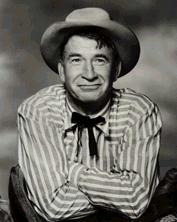
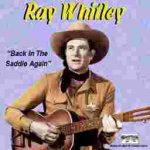
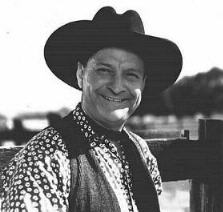

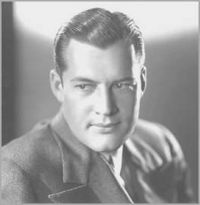
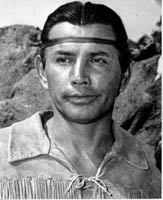
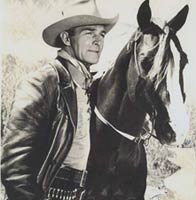
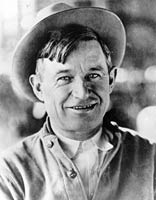
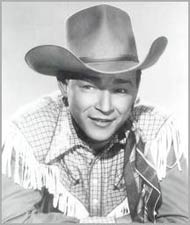
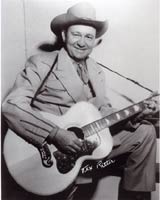
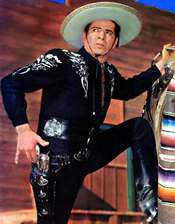
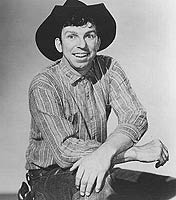
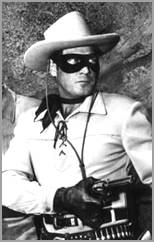
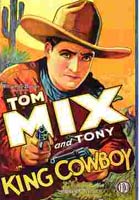
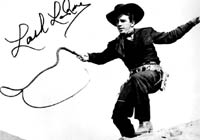
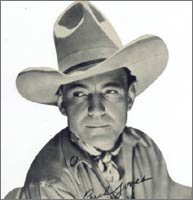
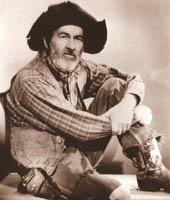
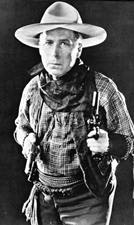
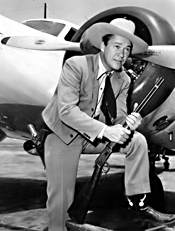
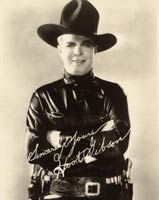
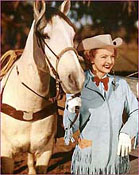
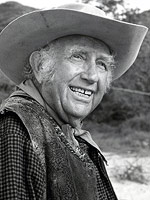
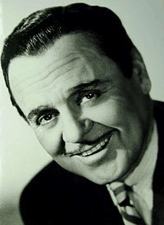
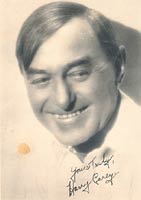
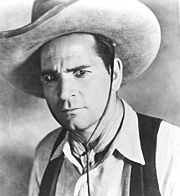

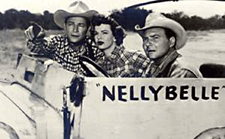
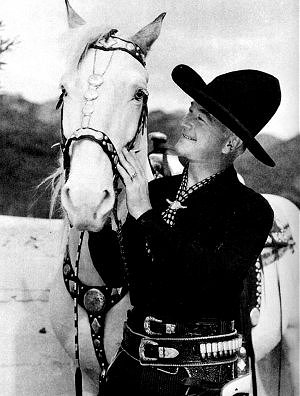
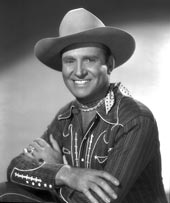
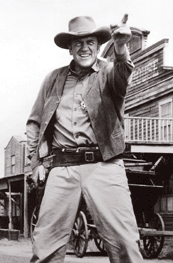
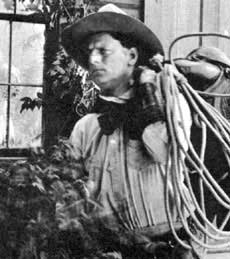
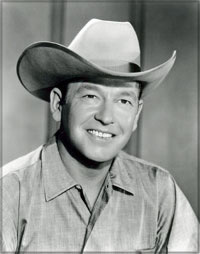 Movie Cowboy/Singing Cowboy: Rex Allen, an actor, singer and songwriter, was known as the “Arizona Cowboy” and “Mister Cowboy”.
Movie Cowboy/Singing Cowboy: Rex Allen, an actor, singer and songwriter, was known as the “Arizona Cowboy” and “Mister Cowboy”.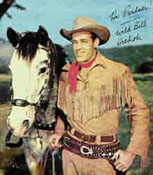
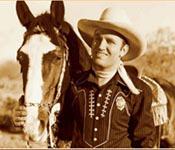
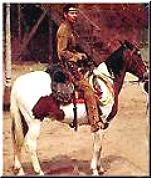
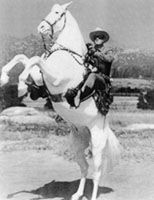
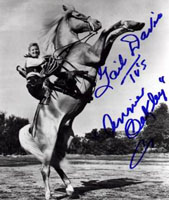
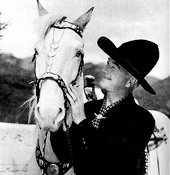

 Buttermilk – Dale Evans horse
Buttermilk – Dale Evans horse Champion – Gene Autry’s Horse
Champion – Gene Autry’s Horse Scout – Tonto’s Horse
Scout – Tonto’s Horse Silver – The Lone Ranger’s Horse
Silver – The Lone Ranger’s Horse Target – TV Annie Oakley’s horse
Target – TV Annie Oakley’s horse  Topper – Hopalong Cassidy’s horse
Topper – Hopalong Cassidy’s horse Trigger (1932-1965) – Roy Rogers’ Horse
Trigger (1932-1965) – Roy Rogers’ Horse